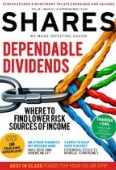Archived article
Please note that tax, investment, pension and ISA rules can change and the information and any views contained in this article may now be inaccurate.
Pension planning for the self-employed

Are you among the growing number of self-employed people in the UK? If so, it is very important to put aside some money every month for your retirement. The onus is on you to think about financial planning otherwise you could face a financially insecure future.
The UK is in the midst of an entrepreneurial boom. The level of self-employment surged from 3.8m in 2008 to 4.6m in 2015, according to the Office for National Statistics. Alarmingly, the number of self-employed paying into a person pension has fallen from 990,000 to 380,000.
Let’s look at two major retirement savings vehicles available to the self-employed.
SIPPs
While the state pension remains the bedrock on which most people’s later years are built, for most it is not enough to sustain the retirement lifestyle they want. You’ll probably want to build a private nest egg to supplement your state pension income.
Self-invested personal pensions (SIPPs) are one of the UK’s most popular retirement saving vehicles and are worth considering if you’re self-employed.
The key word with a SIPP is flexibility. When you are making contributions you can pay in regular amounts or one-off amounts depending on your circumstances.
The range of investment is typically much wider than a standard personal pension. And when it comes to taking money out (after age 55), you can take it all in one go, on an ad-hoc basis or phased over several years.
This is perfect for self-employed individuals who may want to scale back their work commitments or have a financial buffer in place for the months where business is slower.
As it is a personal pension scheme, you also get tax relief on contributions at your marginal rate, so if you’re a basic-rate taxpayer your £80 pension contribution will be topped up with an extra £20 from the Government. If you’re a 40% taxpayer you’ll be able to claim another £20 through your self-assessment tax return.
Remember that pensions are subject to an annual contribution allowance of £40,000 and a lifetime benefits allowance of £1m – save any more than that and you could be hit with severe tax charges.
Lifetime ISA
The new Lifetime ISA, due to launch in April 2017, could also be a viable retirement savings vehicle if you’re self-employed. The product will allow anyone age 40 or under to pay in up to £4,000 a year, and receive a Government bonus of 25% up to £1,000 – equivalent to basic rate pension tax relief.
You can keep paying in until age 50, and withdraw your money and pay no tax at all from age 60.
You can also take your money out before age 60 to pay towards your first home, or if you face serious ill health problems, without any penalty. However, if you access your fund early for any other reason you’ll be hit with a 25% exit charge.
TOM SELBY
Senior analyst, AJ Bell
Important information:
These articles are provided by Shares magazine which is published by AJ Bell Media, a part of AJ Bell. Shares is not written by AJ Bell.
Shares is provided for your general information and use and is not a personal recommendation to invest. It is not intended to be relied upon by you in making or not making any investment decisions. The investments referred to in these articles will not be suitable for all investors. If in doubt please seek appropriate independent financial advice.
Investors acting on the information in these articles do so at their own risk and AJ Bell Media and its staff do not accept liability for losses suffered by investors as a result of their investment decisions.

 magazine
magazine









